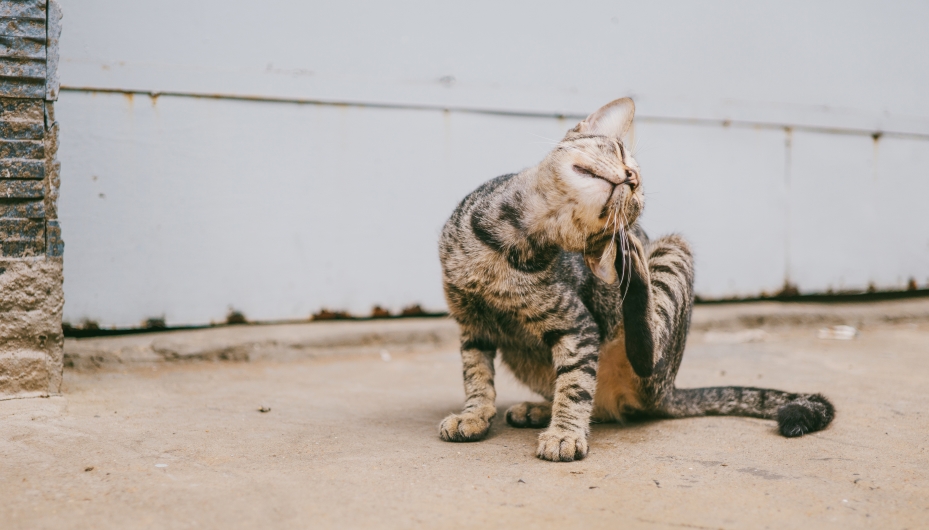Atopy is more commonly referred to as atopic dermatitis and can affect dogs and cats. Atopy is an allergic reaction to allergens and causes symptoms such as itching, sneezing, excessive skin licking, and head shaking. Some breeds of dogs are especially prone to allergic skin reactions; however, all dogs and cats can suffer from allergies.
If you have noticed that your furry friend has developed rashes and is scratching more than usual, your pet cat or dog may be showing signs of atopy.
What are the most common signs of atopic dermatitis in canines and felines? What can you do to treat the symptoms of atopy? When should you call your vet if you notice signs of atopy? You will find the answers to those questions here.
What Causes Atopy in Cats and Dogs?
First, it’s important to know what causes symptoms of allergic reactions in dogs and cats.
Just like humans, dogs and cats can be allergic to environmental triggers.
The Journal of Veterinary Science reports that common triggers for atopy in pets include house dust, house dust mites, pollen, molds, and fleas. Sometimes, allergic reactions to food can cause symptoms similar to atopy and can be difficult to distinguish from atopic dermatitis. (1)
If you think that your dog or cat is showing symptoms of atopy, your local vet can arrange for allergy testing to try and identify the specific allergen.
Symptoms of Atopic Disease in Dogs and Cats
What are the most common symptoms of atopy in your pets that you should look out for?
Itching is a classic symptom of atopic dermatitis
One of the first signs that your pet has an allergic reaction is increased scratching.
You may notice that your pet dog or cat has started scratching behind their ears, licking paws or other parts of their body, or chewing parts of their fur.
Excessive scratching can lead to secondary skin infections which can complicate treating atopy successfully.
Respiratory signs of atopy
Another symptom of atopy in your four-legged friend is breathing problems.
Respiratory symptoms of atopy can manifest themselves as coughing or sneezing. Cats with atopy can be especially prone to asthma.
Itchy ears as a result of atopy could show up as excessive head shaking.
How to Treat Canine and Feline Atopy
The best way to treat symptoms of atopy in cats and dogs is to avoid environmental triggers. However, this may not always be possible especially if your pet is allergic to pollen that they inhale in springtime.
After examining the severity of your pet’s symptoms, your local vet will recommend the best course of treatment. This could involve antihistamines, taking high-dose omega-3 supplements, or frequent bathing.
In severe cases, your vet may recommend medication such as Apoquel to help lessen the immune response to the allergen and stop the itching, irritation, and other symptoms of atopy.

